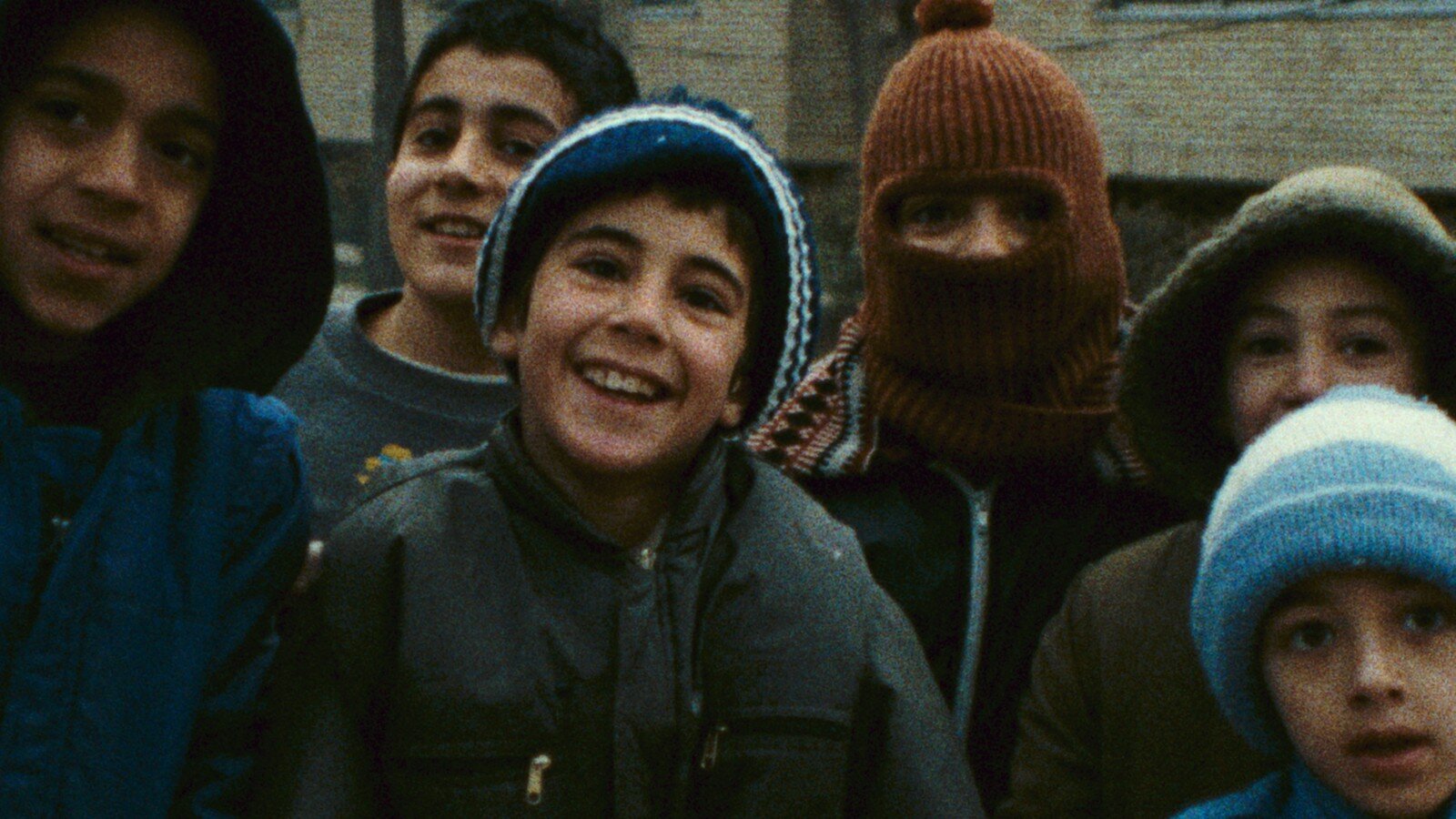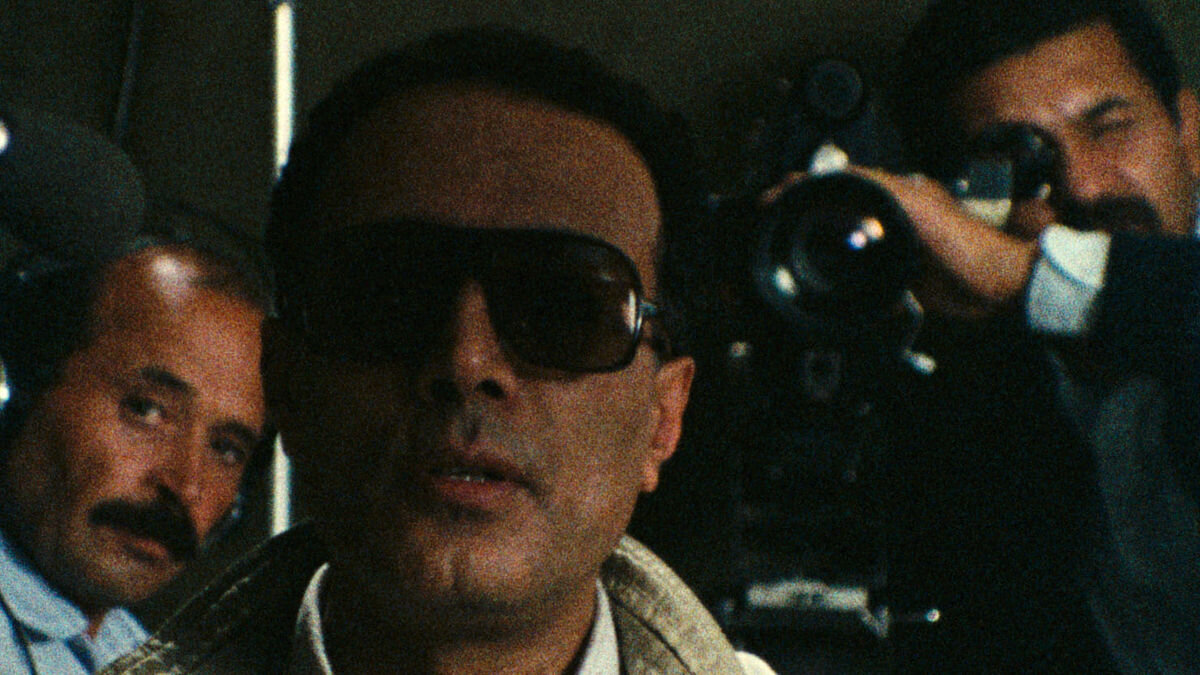Lying About Homework
An annotation for The Melbourne Cinémathèque’s ‘Reaching Beyond the Frame: The Poetic Cinema of Abbas Kiarostami’ programme, which ran at ACMI from 6–22 June 2022 (initially scheduled to run from 21 October to 4 November 2020), and published (without a star rating) in Senses of Cinema Issue 95 (July 2020).
Homework (Abbas Kiarostami, 1989)
★★★★
“It’s a film about homework.”
Or so Abbas Kiarostami tells a group of schoolboys who approach him on the street and ask what he’s filming. “Have you done your homework?” Kiarostami asks them, in turn. A resounding “Yes!,” and off they go to school, where the director and his crew will soon join them. When an adult passerby stops to inquire about the film moments later, Kiarostami skirts politely around his own intentions — the theme will emerge only through the process of filming, but it has something to do with a problem he encountered while helping his son with his homework — before offering the man a vague summary of what he knows so far. “You could say it’s a visual study of pupils’ homework assignments.”
Taken at face value, Kiarostami’s description of his feature documentary Homework (Mashgh-e Shab, 1989) is accurate enough; the bulk of the film entails he and his small crew visiting a poor public school in Tehran and interviewing schoolboys, one after another, about their homework. Calling the film a “visual study,” however, would be selling it short by half. Kiarostami understood better than most that cinema is not a visual but an audiovisual medium, comprised of image and sound; Kiarostami’s cinema, in particular, is as much about what we don’t see as what we do. The interactions described above occur in the opening seconds of the film, and already we’ve seen and heard the children but have only heard the adults. Kiarostami and the passerby remain hidden somewhere beyond the edges of the frame, their conversation perhaps heard from a time and place that doesn’t correspond to what’s shown onscreen. Homework is about children, who we always see, but it’s also about adults, who we only sometimes see.
“Why haven’t you done your homework?”
Kiarostami begins by asking this question, or a question to this effect, to each child seated in front of his camera. The answers they give are often banal (for example, they couldn’t do the homework because some family members came to visit) and sometimes poignant (their parents are illiterate and so weren’t able to help them with it). On this level, the film is a rather straightforward journalistic undertaking about children’s attitudes towards homework and, by extension, schooling and education. But as all documentaries do to some degree, Homework reflects a moment in history — here the latter stages of the Iran-Iraq War, a savage conflict that lasted eight years and killed somewhere in the vicinity of a million people. The young boys who appear in the film don’t yet know a world without it. It’s through their responses to Kiarostami’s simple but persistent questioning, which slowly branches off from the topic of homework, that they reveal the immense cultural, social and political pressures that inflect their lives — and that they carry with them every day, like their schoolbags, between home and school.
“What do you want to be?” Kiarostami asks a child, to which the child responds, “A pilot.” Nothing at all unusual except the reason given, which is “To kill Suddam.” When asked what he’d rather be if Suddam Hussein weren’t part of the picture: a doctor, to save lives! Despite that he ought to be too young to understand what it means, another boy claims he’ll hit his future son to discipline him — seven times, to be exact, this being the same number of slaps he receives from his own father when he acts up. In a more light-hearted but no less absurd fashion, many of the boys profess that they enjoy doing homework as much as they enjoy watching cartoons. The children’s grades, abilities and circumstances may vary, but it’s clear they’re all learning; that is, they’re learning what they’re supposed to say. And one lesson they’ve learned already, it quickly emerges, is that they get punished for not doing homework. Almost every child agrees on what this “punishment” means — it’s usually to get beaten by a parent, with a belt, or sometimes by a teacher, with a ruler. (Few of them agree on, let alone understand, what is meant by “praise” or “encouragement”.) It isn’t the children’s attitudes towards homework that speak loudest, so much as their fear of what would happen should they not do it.
“Why are you crying?”
Kiarostami isn’t even able to broach the topic of homework with Majid, the last boy to appear before the camera. The poor kid is an anxious mess from the outset, crying for his best friend to be alongside him for protection, apologising for no reason in particular and, most tellingly, keeping his arm raised throughout much of the ordeal — something a teacher has taught him to do, when seeking permission. Kiarostami isn’t a teacher, but he may as well be one for Majid and the other children. Like a teacher, this man already seems to know whether they’ve done their homework or not. And like a teacher, he has the power to pull them out of class for reasons they don’t understand, and into a room full of strange men and their strange equipment, the significance of which they also don’t understand. All Majid knows is that Kiarostami belongs to the adult world — the same world in which belong the men and women who punish children for not doing homework. Which is why Majid cries, and why the children lie.
Like Frederick Wiseman’s American documentary High School (1968), filmed two decades earlier in a country that would soon become one of Iran’s ideological nemeses, Homework questions not just how schooling works but what schooling is for. Wiseman does this by focusing on the processes of schooling, by observing the teachers as they teach and discipline the students. Kiarostami focuses instead on the effects of schooling, by provoking the students to reveal what they’ve learned or not — all while questioning his own role as a filmmaker, as the one doing the provoking. Like their anxieties about school, these children’s anxieties about being filmed are often visible on their faces even before their interview has started proper. Not content with mere observation, however, Kiarostami also makes visible the immediate source of their anxieties, through sporadic shots of he and his crew that remind us exactly who’s in charge; and most notably, through the abundant insert shots of his cameraman pointing the lens directly into the eye of another camera — Homework’s single most recurring image — that alternate with talking-head shots of the children throughout the film and function as their collective point of view. Kiarostami may be on the children’s side, but it doesn’t necessarily look that way for the children. This bold and jarring image, staged after the fact and shown again and again, never allows us to forget the imbalance at the film’s centre.
“Are you telling the truth?”
In a late sequence, a teacher leads the entire school through a religious mourning ceremony in the yard, echoing the nationalistic war chants the children are shown performing at the start of their day (“Three and four and five and six, Saddam’s followers are doomed!”). Kiarostami’s voice emerges, in a rare voiceover: maintaining the detached tone he adopts throughout the film, he expresses regret that the children aren’t performing the ceremony to an adequate standard — then turns off the sound. Kiarostami will go on to pull off a similar manoeuvre in the celebrated final sequence of his next film, the masterpiece Close-Up (1991). In that sequence, a faulty lapel mic serves as the pretext for obscuring a climactic conversation between two characters. The rationale given for the silence in Homework, however, is supposedly “out of respect.”
We can’t know for certain if Kiarostami is telling the truth or not, neither here nor elsewhere — but if the sound has been turned off out of respect, it would seem to be out of respect for the children only. With the homogenising camouflage of the singing removed, we can now see (and “hear”) that the children can’t recite the lyrics with any enthusiasm, or beat their chests properly in time, because they don’t care about or even understand the words and actions they’re being made to repeat. Some boys look around confused while others stare off into space, perhaps daydreaming about when the school bell might ring; many risk punishment and take the opportunity to play, by mocking the ceremony with a custom dance, or by sneaking out of formation to flick another boy’s ear from behind. As the soundtrack creeps back in, the camera locates Majid’s ever-anxious face at the tail end of the sequence — and he appears to be one of only few sorry-looking kids who are taking the ceremony seriously.
With a simple formal gesture, Kiarostami transforms the sequence into both a celebration of childhood and an indictment of blind adult authority — and confirms through sound and image what’s already been revealed through the children’s words. What the children say in Homework is often heartbreaking, but what they say isn’t the same as what they think and feel. (Even Majid will be given a final opportunity to prove as much, in the film’s beautiful closing moments.) The truth of this discrepancy comes in the shape of a lie; to see it and hear it for what it is, Kiarostami must lie himself.



